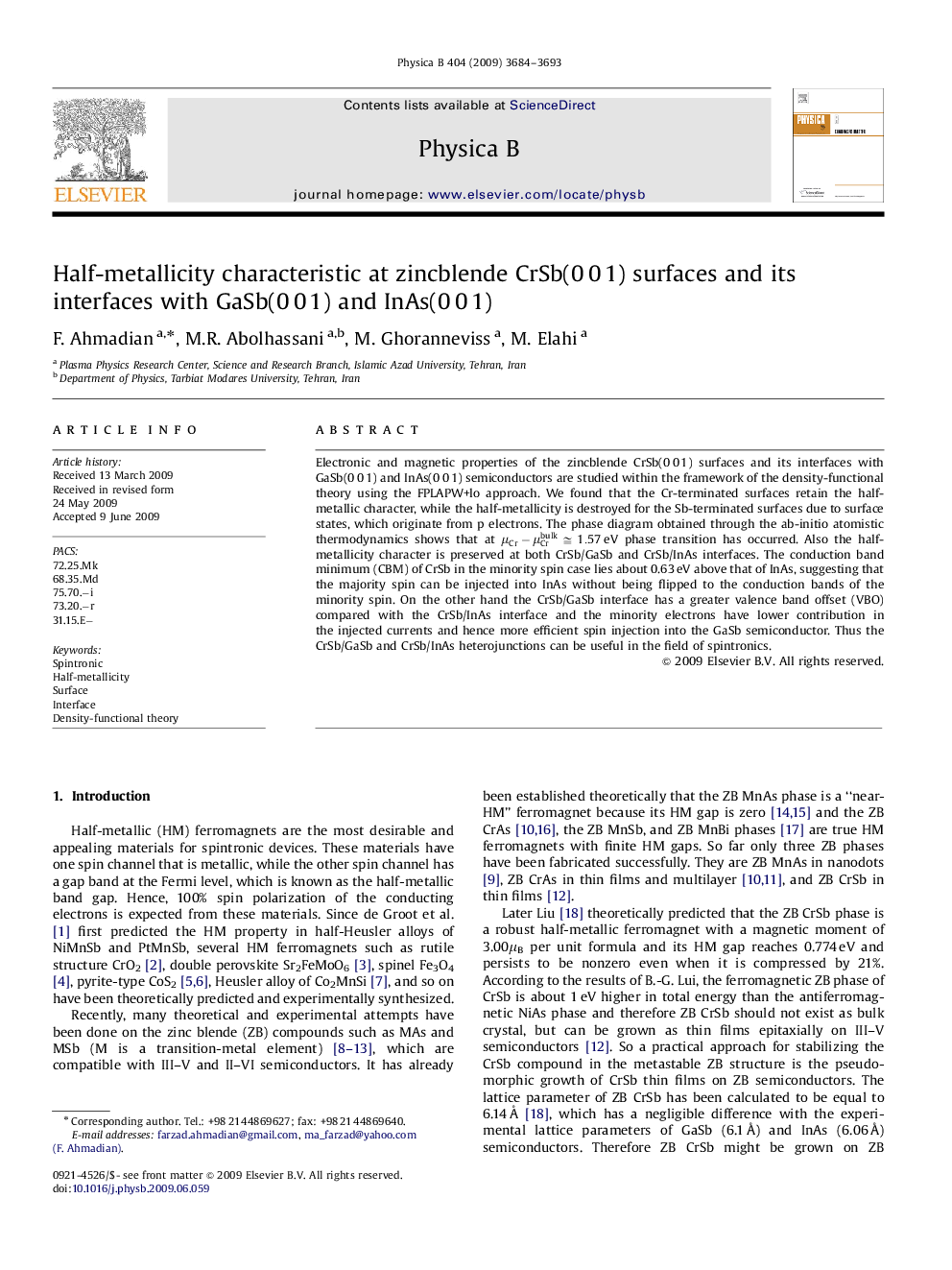| Article ID | Journal | Published Year | Pages | File Type |
|---|---|---|---|---|
| 1814020 | Physica B: Condensed Matter | 2009 | 10 Pages |
Abstract
Electronic and magnetic properties of the zincblende CrSb(0 0 1) surfaces and its interfaces with GaSb(0 0 1) and InAs(0 0 1) semiconductors are studied within the framework of the density-functional theory using the FPLAPW+lo approach. We found that the Cr-terminated surfaces retain the half-metallic character, while the half-metallicity is destroyed for the Sb-terminated surfaces due to surface states, which originate from p electrons. The phase diagram obtained through the ab-initio atomistic thermodynamics shows that at μCr-μCrbulkâ
1.57eV phase transition has occurred. Also the half-metallicity character is preserved at both CrSb/GaSb and CrSb/InAs interfaces. The conduction band minimum (CBM) of CrSb in the minority spin case lies about 0.63Â eV above that of InAs, suggesting that the majority spin can be injected into InAs without being flipped to the conduction bands of the minority spin. On the other hand the CrSb/GaSb interface has a greater valence band offset (VBO) compared with the CrSb/InAs interface and the minority electrons have lower contribution in the injected currents and hence more efficient spin injection into the GaSb semiconductor. Thus the CrSb/GaSb and CrSb/InAs heterojunctions can be useful in the field of spintronics.
Keywords
Related Topics
Physical Sciences and Engineering
Physics and Astronomy
Condensed Matter Physics
Authors
F. Ahmadian, M.R. Abolhassani, M. Ghoranneviss, M. Elahi,
